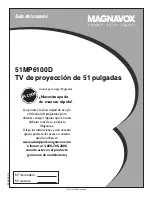
Functions
2.25 Function Control and Circuit Breaker Test
SIPROTEC, 7SD5, Manual
C53000-G1176-C169-5, Release date 02.2011
449
For automatic reclosure and circuit breaker test
Separate binary inputs comprising information on the position of the circuit breaker are available for the auto-
matic reclosure and the circuit breaker test. This is important for
• The plausibility check before automatic reclosure (refer to Section 2.17),
• The trip circuit check with the help of the TRIP–CLOSE–test cycle (refer to Section 2.25.2).
When using 1
1
/
2
or 2 circuit breakers in each feeder, the automatic reclosure function and the circuit breaker
test refer to
one
circuit breaker. The feedback information of this circuit breaker can be connected separately
to the device.
For this, separate binary inputs are available, which should be treated the same and configured additionally if
necessary. These have a similar significance as the inputs described above for protection applications and are
marked with „CB1 ...“ to distinguish them, i.e.:
•
„>CB1 3p Closed“
(No. 410) for the series connection of the NO auxiliary contacts of the CB,
•
„>CB1 3p Open“
(No. 411) for the series connection of the NC auxiliary contacts of the CB,
•
„>CB1 Pole L1“
(No. 366) for the auxiliary contact of pole L1,
•
„>CB1 Pole L2“
(No. 367) for the auxiliary contact of pole L2,
•
„>CB1 Pole L3“
(No. 368) for the auxiliary contact of pole L3.
2.25.1.3 Open Pole Detector
Single-pole dead times can be detected and reported via the Open Pole Detector. The corresponding protec-
tion and monitoring functions can respond. The following figure shows the logic structure of an Open Pole De-
tector.
















































